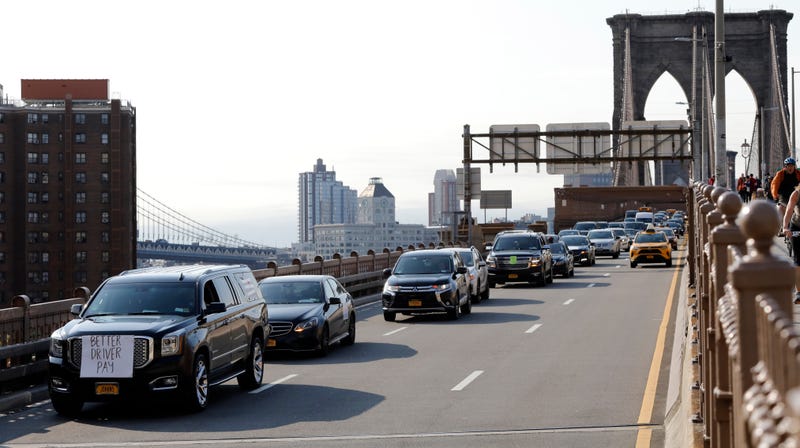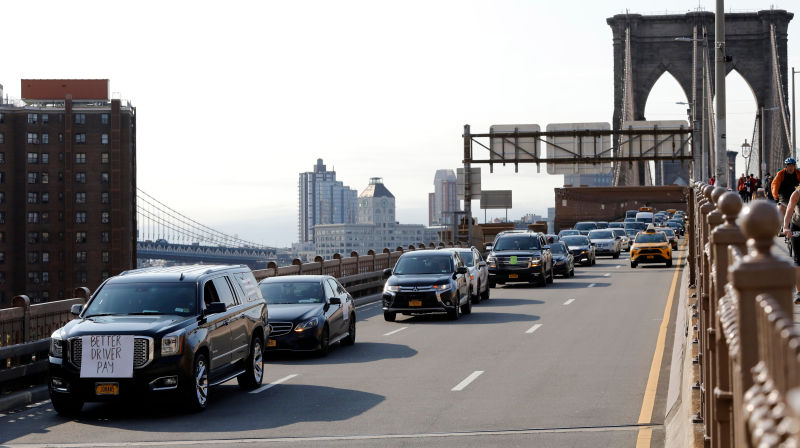
Today, many Uber and Lyft drivers in major cities across the country are striking to protest their pay and working conditions, in large part because they’re classified as independent contractors instead of employees. But Uber doesn’t think of its drivers as independent contractors or employees. It believes drivers are, in fact, Uber’s customers.
It’s right there in Uber’s filing with the Securities and Exchange Commission for their initial public offering:
Partner.
Partner refers to any one of a Driver, restaurant, or shipper, all of whom are our customers.
As far as Uber, the largest ride-share company in the world, sees it, you’re not Uber’s customer. You, the person whose money Uber is taking. As Uber sees it, Uber owes you nothing:
Because end-users access our platform for free and we have no performance obligation to end-users, end-users are not our customers.
This sounds crazy, right? The driver is the one taking the money, you’re the one giving the money. How can the person taking the money be the customer? And what does that make the person giving the money?
Advertisement
Uber’s argument is exactly the type of pretzel logic you’d expect from the company. Hell, it’s the kind of thing you’d probably expect of any company reportedly valued close to $100 billion even though almost all of its labor is conducted by people it refuses to call employees.

The app, Uber’s entire product, is merely a go-between, as Uber positions itself. The driver uses the app to find their customers and in return gives Uber a (large) cut of the fare.
Advertisement
But this is a skewed view of the situation. Vanishingly few of these drivers would even be for-hire drivers if not for Uber, and a similarly small percentage of riders would be using for-hire vehicle services if not for Uber, thanks in large part to the considerable incentives the company offers to both sides of the equation. It’s unrealistic to act as if there’s a level interaction going on here.
In Uber’s interpretation, the company’s app is an exchange of sorts, facilitating business. It’s nothing but a middleman.
And even though the driver receives payments from Uber, that’s merely a logistical accident; Uber also acts as a payment exchange, for safety and security reasons, and therefore takes its cut at that point in the process.
Advertisement
This whole issue could be relegated to a mere semantic debate if it didn’t have profound implications for how much Uber’s “customers” get paid. And this is where Uber’s argument gets really screwy, because Uber is also making the case that drivers are independent contractors. This is so it doesn’t have to classify them as employees, as that would trigger all kinds of legal and financial protections for drivers. Wouldn’t want that!
Every year, drivers receive 1099 forms for their taxes instead of W-2s from Uber, revealing the ultimate have-your-cake-and-eat-it-too logic to Uber’s driver classification.
To recap, drivers are both their customers and independent contractors who receive income-related tax documentation from Uber.
Advertisement
This is a complicated relationship, one at the center of an increasingly large share of the American economy. Before working for Jalopnik, I was a freelance writer and had a similarly complex relationship with the outlets I wrote for. Those publications contracted with me to write articles in exchange for money, so they were very clearly employing me in some capacity. But I was also selling my journalistic services to the publications and competing with other journalists for a finite freelance budget pool. Were the publications my customer? How did readers, the ultimate customer, factor into this equation?
By Uber’s logic, I was that publication’s customer, and the publication would have had “no performance obligation” to readers, who are not their customers.
Of course, even the most desk-pounding, J. Jonah Jameson-lookalike editors I dealt with never tried to claim I was their customer. I sometimes toyed with the idea editors were my customer, but ultimately subscribed to the notion that readers were both of our customers. Anyways, a pretty core tenet of being a customer is you don’t send that customer a 1099, because that means you paid them.
Advertisement
Back to today’s strike by drivers. It’s technically not a strike, at least not according to Uber’s definition. It’s a boycott. Or, perhaps more accurately, it’s a strike and a boycott, executed by the same group of people, who are both independent contractors and customers.

This classification confusion underscores the source of the drivers’ ire. That customer/labor unrest will continue as long as Uber, Lyft, and similar businesses that rely on the gig economy refuse to abide by the legal, economic, and social definitions we have created over centuries about our role in this sordid capitalist play every time money is exchanged. It may suit these behemoths to pretend words don’t have meaning, but you can only live in a fantasy for so long.
Advertisement
Another realization from Uber’s S-1 has been the immense amount of leverage drivers in the company’s few largest markets have. One quarter of its business happens in just five cities. With collective action, those drivers could have immense influence over the future of the company.
Perhaps it’s finally time for Uber to start listening to their customers. After all, as any business knows, the customer is always right.













